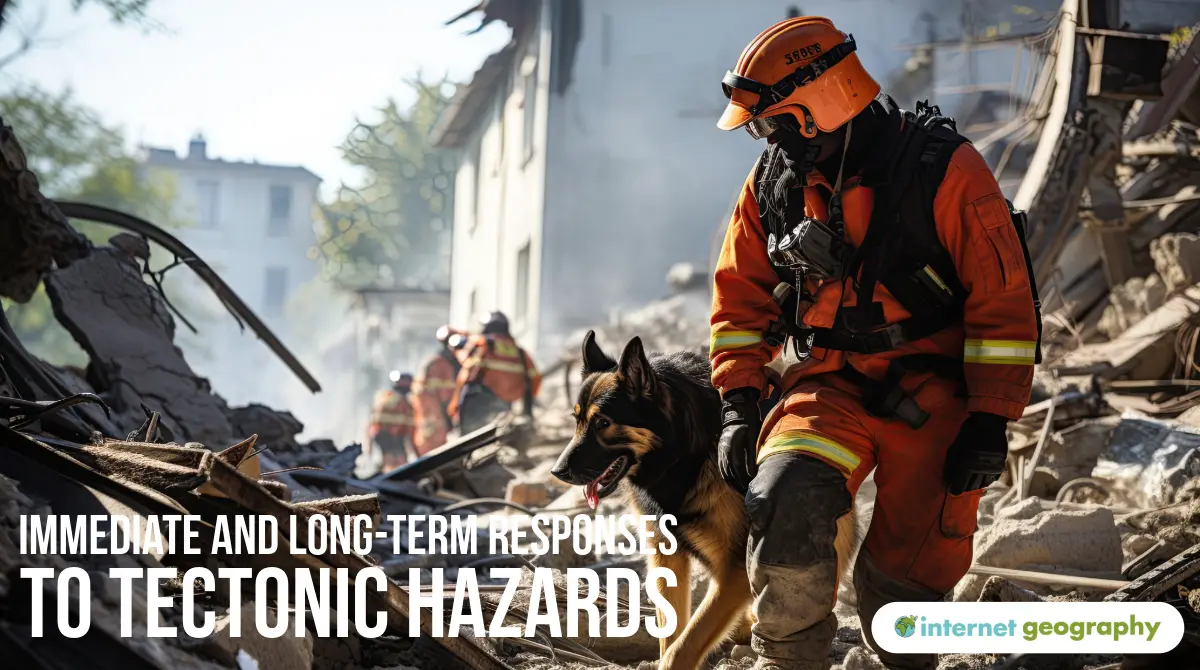Immediate and long-term responses to tectonic hazards
Following a tectonic hazard, the recovery effort is supported by both immediate and long-term responses. Short-term or immediate responses occur in the hours and days immediately after a disaster. Short-term responses mainly involve evacuation, search and rescue and providing aid to those affected.
Long-term responses go on for months and years after a disaster. It involves reconstructing destroyed houses, schools, hospitals, and other essential facilities. It also involves taking steps to boost the local economy.
Responses differ between countries at different stages of development.
Immediate responses to tectonic hazards
Immediate responses refer to the assistance and aid provided within the hours and days following a disaster. Immediate responses to tectonic hazards include:
- Issuing warnings – this can follow volcanic eruptions when activity is likely to continue. It can also occur after a major earthquake due to the risk of aftershocks.
- Rescue teams searching for survivors – often, LICs rely on support from aid agencies and HIC governments for support in searching for survivors.
- Providing treatment to injured people – this can include administering painkillers or antibiotics, as well as treating minor injuries through to emergency surgery for the most severely affected. Field hospitals are set up where considerable pressure is placed on existing medical facilities.
- Food, drink and shelter provided – providing clean, safe water is a significant priority following major tectonic hazard events, as services are often damaged or destroyed.
- Recovering bodies – following the rescue of people trapped by a hazardous event, the priority changes to removing bodies.
- Extinguishing fires – fires are common following earthquakes due to damage to gas pipes and damaged electricity lines. In some instances, deaths caused by fires have been greater than those caused by building collapses.
Long-term responses to tectonic hazards
Long-term responses are those that occur in the weeks and months following a hazard event. They focus on rebuilding and reconstructing areas affected by a hazardous event. Long-term responses to tectonic hazards include:
- Rebuilding and repairing properties
- Rebuilding and repairing transport infrastructure
- Improving building regulations
- Restoring utilities such as water, electricity and gas
- Resettling local people
- Developing opportunities for the economy to recover
- Install monitoring equipment

